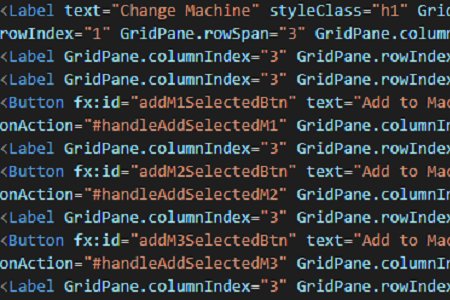
Working Towards Industry 4.0
What is Industry 4.0?
Industry 4.0 is an industry renaissance revolutionising manufacturing, known as the fourth industrial revolution.
It represents a shift within industry toward smarter, digitised systems allows for more control within production lines1. This control is enabled by building smarter communication systems between machines, utilising Internet of Things (IoT) and Machine Learning (AI) from data collection within the product line en masse. Analysing and systematically extracting data from the product line in quantities large enough to require specialist data processing and handling is Big Data within the product line1 needing machine learning for data processing.
Industry 4.0 has a heritage defined in revolution from[1]:
- Industry 1.0 – Mechanisation, steam and water power.
- Industry 2.0 – Mass production and electricity.
- Industry 3.0 – Electronic and IT systems automation.
- Industry 4.0 – Cyber physical systems.
Why is it important?
Using IoT and AI in communication processes within manufacturing; calculations can be made quickly and efficiently guaranteeing responses within specified time constraints, otherwise defined as “real time”, with continuous machine operation monitoring[2]. This can speed up processes and filter superfluous data ensuring cumbersome processes within the product line are kept to a minimum.
Real time systems allow continuous monitoring and adjustments, increasing speed and matching customer demands in an economy where transactions are digital and increasingly automated, defining a real-time economy. This continual digitisation of business transactions allows adjustment to the supply chain in real time, when needed, for both manufacturer and client. Costs, company alignment and product value, all benefit from real time actioning and digitisation of transactions.
By digitisation and digitally quantifying process within the supply chain, efficiency within the processes allow human power in manufacturing to shift. This allows human power to provide more support to the product line. This shift in resources allows for:
- Efficient organisation actioning and agility in structure to adapt for client needs.
- Better building of company culture.
- Interdepartmental connectivity.
- Maximising production outcomes.
- Deeper understanding of client needs for better problem solving2
By making this shift, production can increase, machine downtime can decrease and customers can receive goods on time, when and where they need it most.
When machine repair is required, smart systems can assist with fast diagnosis and action on the repair. Integrating Augmented Reality (AR) with hardware can make repair logs and finding what needs repair quick and easy2. AR is the next step in training staff to make repairs and assessments on machines accessible and agile to business and staff needs.
How is Jehbco integrating Industry 4.0 into practice?
Since becoming a member of the Australian Manufacturing Growth Centre (AMGC) Jehbco has been gradually incorporating more Industry 4.0 practices into our manufacturing systems. The AMGC has supported higher R&D spending, Information & Communication Technology (ICT) spending and collaborative efforts between manufacturers and research institutions fostering Australia’s Industry 4.0 progress[3].
Jehbco Silicones is still working towards fully integrating into the business. Starting with machine upgrades for digitised capture of data. These upgrades employ small localised computers designed to take specific inputs to produce specific outputs. These small computers are Programable Logic Controllers (PLC’s) and run many different machines.
By integrating machine PLC’s to capture run time data we can build automated production and factory schedules allowing for increased monitoring of production and systems output.
Through capturing data and putting it to use we are initiating automated factory scheduling. Looking toward building a future of predictive scheduling and production analysis to optimise factory output, product lead times and delivery in full on time.
If you would like to learn more about the integration of Industry 4.0 into our manufacturing processes please contact us.
References
- Dassault Systèmes 2021, Digitalization and Continuity. Dassault Systèmes, Viewed 02 February 2021, https://discover.3ds.com/digitalization-and-continuity?utm_medium=cpc&utm_source=google&utm_campaign=202101_glo_sea_en_op51508_labl_generic_manuf_ww_bmm&utm_term=manuf-industry4.0&utm_content=search&gclid=Cj0KCQiAx9mABhD0ARIsAEfpavTScy6bKhE-u9lUY_efVdw5BNmG6PypTTIOu8QGBGeXcbo4q0a-K18aApOTEALw_wcB
- i-Scoop 2021, Industry 4.0: the fourth industrial revolution – guide to Industrie 4.0, i-Scoop, Viewed 02 February 2021, https://www.i-scoop.eu/industry-4-0/#:~:text=Industry%204.0%20is%20the%20current,called%20a%20%E2%80%9Csmart%20factory%E2%80%9D.
- AMGC, 2021, Advanced Manufacturing a new definition for a new era, viewed 23 February 2021, https://www.amgc.org.au/wp-content/uploads/2018/11/Advanced-Manufacturing-a-new-definition-for-a-new-era.pdf


